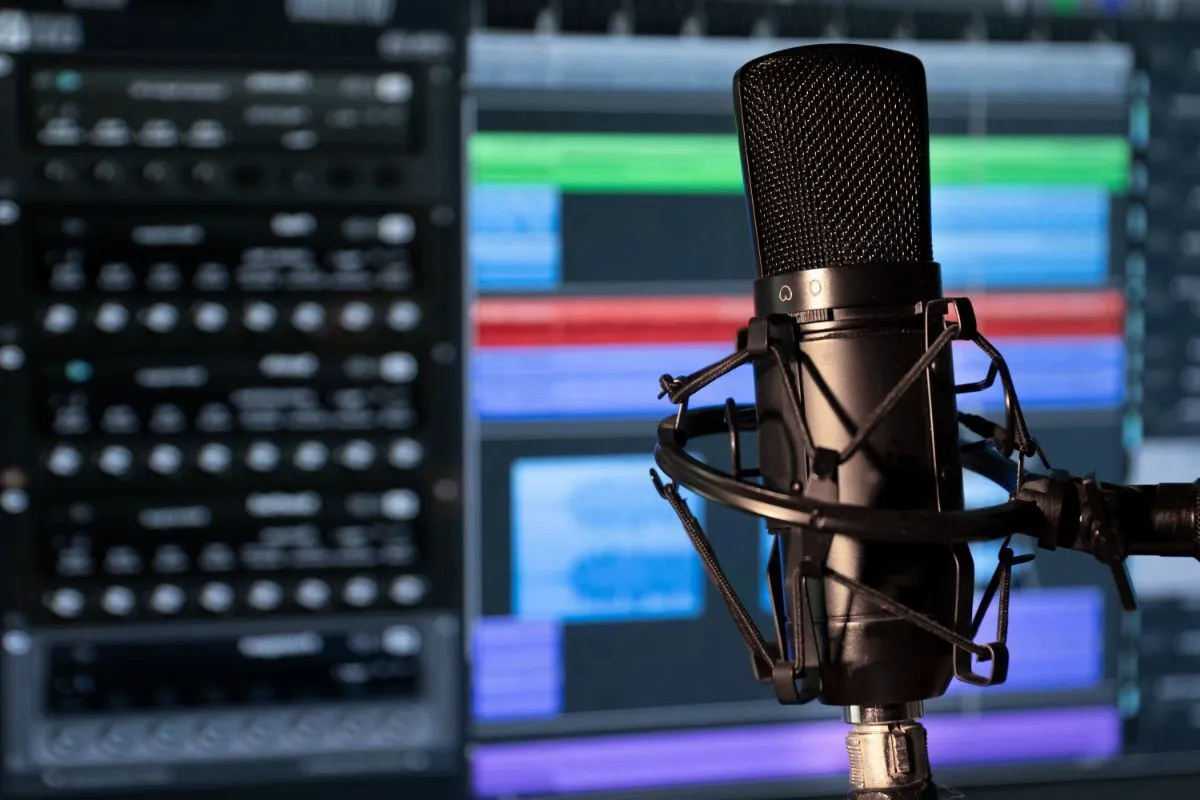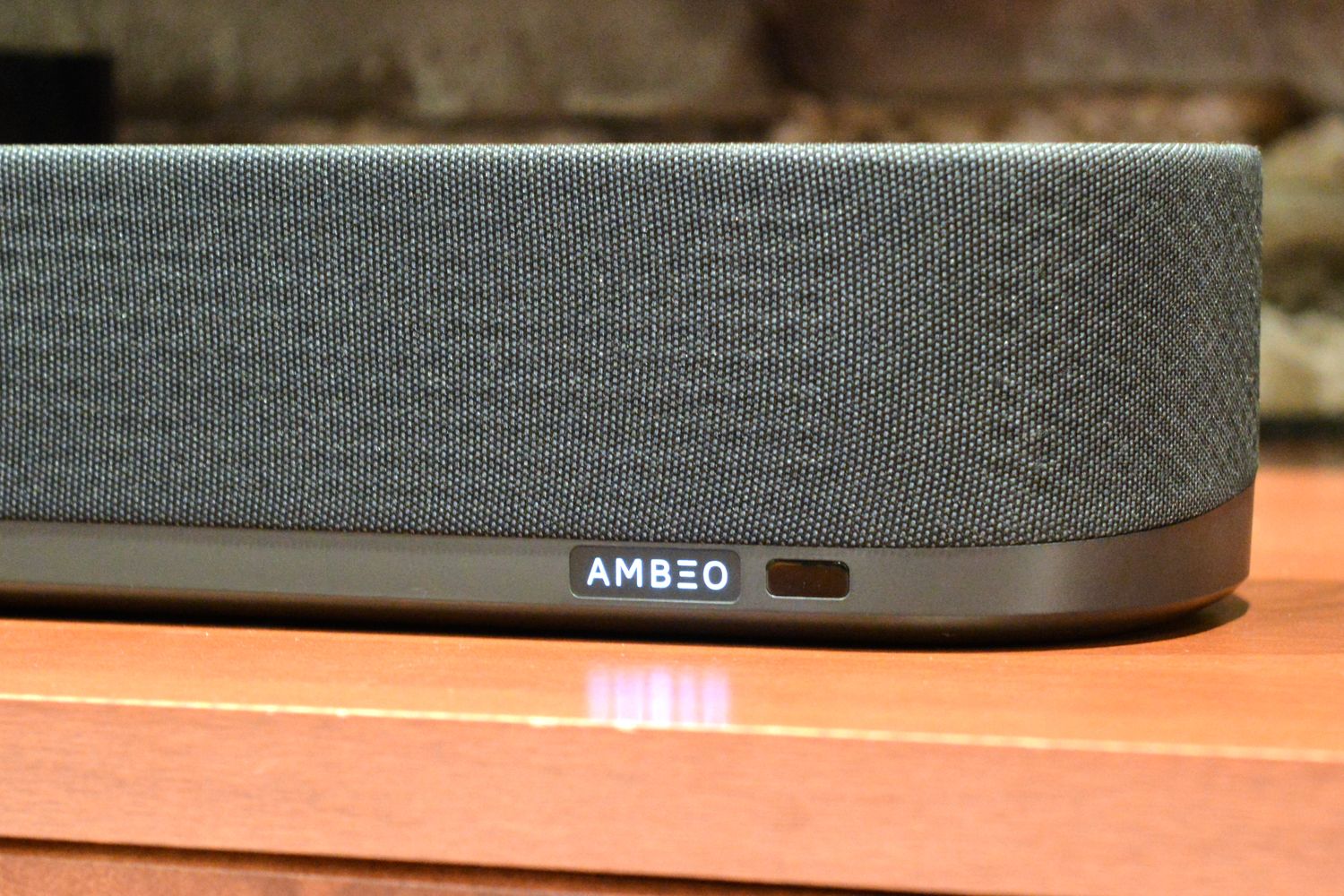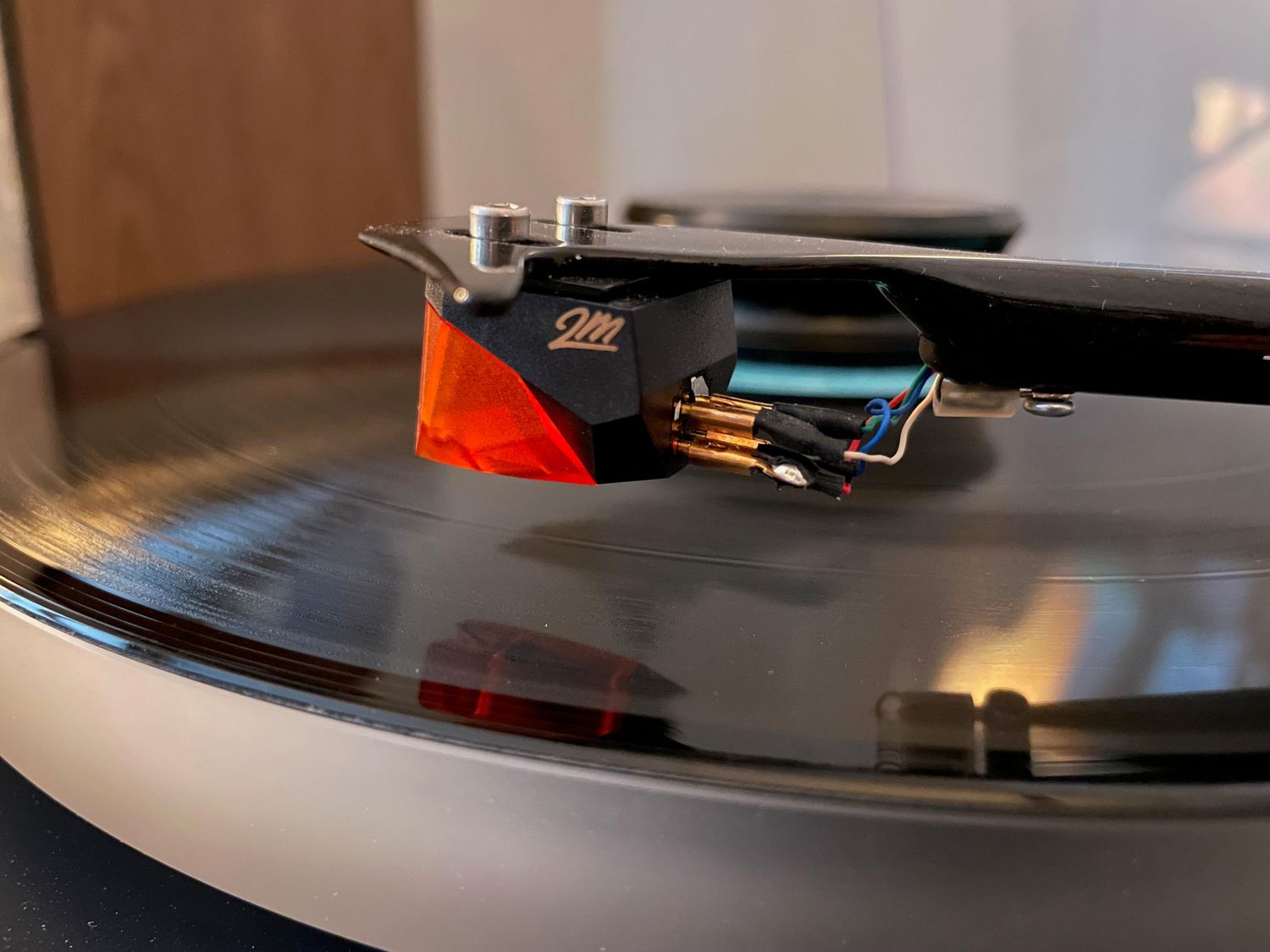Home>Devices & Equipment>Microphone>How To Stop Microphone Echo


Microphone
How To Stop Microphone Echo
Published: February 17, 2024
Learn how to eliminate microphone echo with our simple and effective techniques. Stop the frustration and improve your audio quality today.
(Many of the links in this article redirect to a specific reviewed product. Your purchase of these products through affiliate links helps to generate commission for AudioLover.com, at no extra cost. Learn more)
Table of Contents
Introduction
Understanding Microphone Echo
Microphone echo can be a frustrating issue, especially for those who rely on clear audio for professional or recreational purposes. Whether you’re a podcaster, gamer, musician, or remote worker, dealing with microphone echo can significantly impact the quality of your recordings or communications. Fortunately, there are several effective strategies to minimize or eliminate microphone echo, allowing you to maintain clear and crisp audio output.
In this comprehensive guide, we’ll explore the various causes of microphone echo and provide practical solutions to address this common problem. By understanding the underlying factors contributing to echo and implementing the recommended steps, you can enjoy a seamless audio experience without disruptive reverberations or unwanted feedback.
From adjusting microphone settings to utilizing specialized software and hardware, we’ll cover a range of techniques to help you achieve optimal audio quality. Whether you’re troubleshooting echo issues in a home recording studio, conference call setup, or gaming environment, the insights shared in this guide will empower you to overcome microphone echo and elevate your audio performance.
Join us as we delve into the intricacies of microphone echo and equip you with the knowledge and tools to conquer this audio nuisance once and for all.
Understanding Microphone Echo
Microphone echo, also known as audio feedback, occurs when sound from the speakers is picked up by the microphone and re-amplified. This creates a loop of sound that can be disruptive and distracting. Understanding the causes of microphone echo is crucial in effectively addressing this issue.
Causes of Microphone Echo:
- Speaker proximity: When the speakers are too close to the microphone, sound from the speakers can easily be picked up, leading to echo.
- Room acoustics: Rooms with hard surfaces, such as bare walls and floors, can cause sound to bounce and create echo, especially when using microphones with high sensitivity.
- Microphone sensitivity: High microphone sensitivity can exacerbate echo issues, as it may pick up even faint sounds from the speakers.
- Software and hardware limitations: Inadequate sound processing or low-quality audio equipment can contribute to echo problems.
Impact of Microphone Echo:
Microphone echo can have various negative effects, including:
- Reduced audio clarity: Echo can distort the original sound, making it challenging for listeners to understand the message.
- Disruptive communication: During voice or video calls, echo can hinder effective communication and lead to frustration among participants.
- Impaired recording quality: For content creators, musicians, and podcasters, echo can compromise the quality of recordings, diminishing the overall production value.
By gaining insights into the factors contributing to microphone echo, individuals can take targeted steps to mitigate its impact and restore clear, echo-free audio. In the following sections, we'll explore practical solutions to address microphone echo, empowering users to optimize their audio setups and enjoy uninterrupted sound transmission.
Step 1: Adjust Microphone Position
Proper microphone placement is crucial in minimizing echo and achieving optimal sound capture. By strategically positioning the microphone, you can mitigate the risk of unwanted reverberations and feedback loops. Consider the following tips to adjust your microphone position effectively:
- Distance from Speakers: Maintain a sufficient distance between the microphone and any speakers or audio output sources. This helps reduce the likelihood of sound from the speakers being picked up by the microphone, thereby minimizing echo.
- Off-Axis Placement: Position the microphone slightly off-axis from the speakers. By angling the microphone away from the primary sound source, you can attenuate direct sound pickup and mitigate echo.
- Use of Pop Filters: In vocal recording scenarios, employing pop filters can help diminish plosive sounds and reduce the transmission of unwanted air pressure variations, contributing to clearer audio and minimizing potential echo.
- Optimizing Room Acoustics: If possible, utilize acoustic treatments such as sound-absorbing panels or curtains to dampen reflections and minimize echo-inducing reverberations within the recording environment.
By implementing these adjustments, individuals can optimize microphone positioning to reduce the likelihood of echo and enhance the overall audio capture quality. In the next section, we’ll delve into the benefits of using headphones to further mitigate microphone echo and improve audio monitoring during recording and communication sessions.
Step 2: Use Headphones
Employing headphones during audio recording and communication sessions can significantly contribute to mitigating microphone echo and enhancing overall sound quality. By utilizing headphones, individuals can achieve direct audio monitoring while minimizing the risk of sound leakage and feedback loops. Here’s how using headphones can effectively address microphone echo:
- Isolation of Audio Output: When wearing headphones, the audio output is contained within the ear cups, reducing the likelihood of sound from the speakers being inadvertently picked up by the microphone and causing echo.
- Prevention of Feedback: Headphones help prevent audio feedback by ensuring that the microphone does not capture and re-amplify sound from the speakers, thereby minimizing echo and maintaining clear audio transmission.
- Enhanced Audio Monitoring: By monitoring audio directly through headphones, individuals can discern and address any potential echo or audio anomalies in real time, allowing for immediate adjustments to optimize sound quality.
- Improved Focus and Immersion: In recording environments, using headphones can enhance the immersion and focus of the performer or speaker by delivering a controlled audio feed, free from external distractions and echo-inducing reverberations.
Whether engaging in professional voice recording, virtual meetings, or live streaming, the use of headphones offers a practical solution to minimize microphone echo and elevate the overall audio experience. In the subsequent sections, we’ll explore additional techniques, including adjusting microphone sensitivity and utilizing acoustic treatment, to further combat microphone echo and enhance audio clarity.
Step 3: Adjust Microphone Sensitivity
Modifying the sensitivity settings of your microphone can play a pivotal role in mitigating echo and optimizing audio capture. By adjusting the microphone sensitivity, you can fine-tune its responsiveness to sound, reducing the likelihood of unintended echo and feedback. Here’s how you can effectively adjust microphone sensitivity to minimize echo:
- Utilize Built-In Controls: Many microphones feature adjustable sensitivity controls, allowing users to regulate the level of sound the microphone picks up. Refer to the microphone’s user manual or specifications to identify and modify the sensitivity settings as needed.
- Software Configuration: For USB microphones or those integrated with digital interfaces, explore the accompanying software or audio control panels to adjust sensitivity levels. This may involve reducing input gain or adjusting digital signal processing (DSP) settings to optimize sensitivity and minimize echo.
- Test and Refine: Experiment with different sensitivity levels while monitoring audio feedback. Gradually decrease the microphone sensitivity to a point where it adequately captures the desired sound while minimizing the pickup of ambient noise and speaker output.
- Dynamic Range Compression: Consider employing dynamic range compression to regulate the microphone’s sensitivity across varying sound levels, ensuring that loud audio signals are attenuated while quieter sounds are effectively captured, reducing the potential for echo.
By customizing the microphone sensitivity to suit the specific recording or communication environment, individuals can curtail echo and achieve precise audio capture without compromising sound quality. In the upcoming sections, we’ll delve into the benefits of utilizing acoustic treatment and noise-canceling software to further enhance the mitigation of microphone echo and optimize audio performance.
Step 4: Use Acoustic Treatment
Implementing acoustic treatment within your recording or communication space can significantly diminish the presence of microphone echo by mitigating reverberations and controlling sound reflections. Whether you’re operating in a home studio, conference room, or gaming setup, strategic placement of acoustic treatment materials can enhance audio clarity and reduce the impact of echo. Consider the following approaches to effectively utilize acoustic treatment:
- Strategic Placement of Absorption Panels: Install acoustic panels at reflection points within the room to absorb and dampen sound waves, minimizing the occurrence of echo-inducing reverberations.
- Usage of Bass Traps: Incorporate bass traps in corners or areas prone to low-frequency buildup to attenuate bass resonance and prevent excessive low-end reverberations that can contribute to echo.
- Diffusion for Sound Control: Integrate diffuser panels to scatter sound waves and disperse reflections, reducing the concentration of direct sound paths that may lead to echo within the space.
- Isolation of Recording Area: If feasible, create a dedicated recording area with sound isolation measures, such as acoustic partitions or portable isolation booths, to minimize external noise and prevent echo from permeating the recording environment.
By incorporating acoustic treatment tailored to the specific acoustic characteristics of the space, individuals can effectively attenuate echo and create an acoustically optimized environment conducive to high-quality audio capture. In the subsequent section, we’ll explore the utilization of noise-canceling software as a supplementary strategy to further combat microphone echo and refine audio output.
Step 5: Use Noise-Canceling Software
Employing noise-canceling software can serve as an effective measure to further diminish microphone echo and enhance audio clarity in various recording and communication scenarios. By leveraging digital signal processing and advanced algorithms, noise-canceling software can identify and attenuate unwanted background noise and echo, resulting in a cleaner and more articulate audio output. Here’s how you can utilize noise-canceling software to combat microphone echo:
- Real-Time Noise Suppression: Select noise-canceling software solutions offer real-time noise suppression capabilities, actively identifying and attenuating echo and ambient noise during audio capture or communication sessions.
- Adaptive Filtering: Advanced noise-canceling algorithms can adaptively filter out specific frequencies associated with echo and reverberations, effectively minimizing their presence in the recorded or transmitted audio signal.
- Customizable Noise Profiles: Some noise-canceling tools allow users to create custom noise profiles, enabling tailored suppression of echo and background noise based on the unique acoustic characteristics of the recording environment.
- Integration with Recording Software: Noise-canceling software may seamlessly integrate with popular recording and communication applications, providing a streamlined solution for echo reduction without requiring additional hardware.
By incorporating noise-canceling software into your audio workflow, you can significantly reduce the impact of microphone echo and achieve pristine sound quality across diverse applications, from podcasting and content creation to remote meetings and live streaming. In the subsequent section, we’ll summarize the key strategies discussed in this guide and emphasize the importance of implementing a holistic approach to address microphone echo effectively.
Conclusion
Addressing microphone echo is essential for ensuring clear and professional-quality audio in various settings, including recording studios, conference rooms, and virtual communication platforms. By understanding the underlying causes of echo and implementing targeted strategies, individuals can effectively mitigate its impact and elevate the overall audio experience. From adjusting microphone positioning and sensitivity to utilizing acoustic treatment and noise-canceling software, a holistic approach is key to combating microphone echo and achieving optimal sound quality.
It’s crucial to recognize that each mitigation strategy complements the others, and a combination of these approaches can yield the most effective results. By optimizing microphone placement and sensitivity, individuals can minimize the capture of unwanted sound and reduce the potential for echo. Additionally, the integration of acoustic treatment within the recording environment can further attenuate reverberations and control sound reflections, contributing to a more acoustically optimized space.
Furthermore, the utilization of noise-canceling software offers a digital solution to actively suppress echo and background noise, delivering pristine audio output in real time. When combined, these strategies empower individuals to create an environment conducive to clear, echo-free audio capture and transmission, enhancing the quality of recordings, virtual meetings, and live broadcasts.
By implementing the recommendations outlined in this guide, individuals can proactively address microphone echo and elevate their audio performance, fostering seamless communication and enriching the auditory experience for both creators and audiences. As technology continues to evolve, leveraging these strategies alongside advancements in audio processing and hardware innovations will further enhance the ability to combat microphone echo and achieve unparalleled sound fidelity.
Ultimately, by embracing a comprehensive approach to echo mitigation and staying attuned to emerging audio solutions, individuals can navigate the challenges of microphone echo with confidence, ensuring that their voice is heard with utmost clarity and precision.











